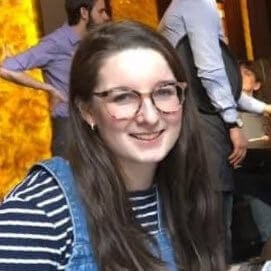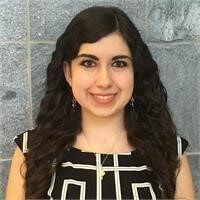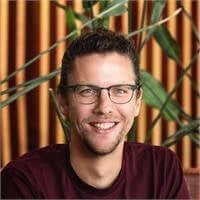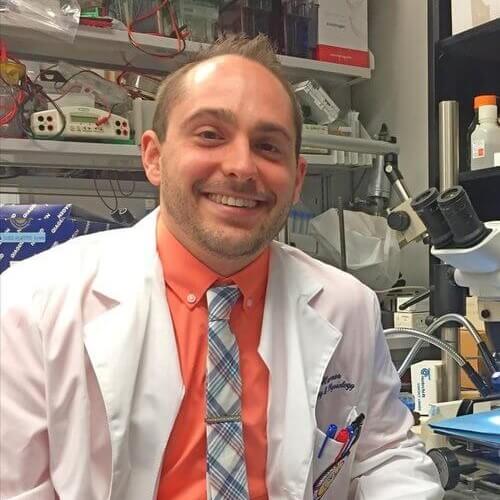Events and education
ARVO program helps young scientists improve communication skills
Since its inception in 2017, ARVO’s Science Communication Training Fellowship (SciCommTF) has trained 60 Members-in-Training from around the world on how to communicate their science. The program is designed to help young scientists educate and inform various audiences about eye and vision research. The group also learns how to develop messages to support research funding in the United States and abroad. The 2019 cohort, which began in March, is half-way through their year-long program. Program participants have already started applying lessons learned to their own research. A cornerstone of SciCommTF is the individual development of an outreach project on eye and vision science. Fellows must identify their audience, develop their program, create their messages and a promotional plan and use what they’ve learned from webinars and assignments to identify and track measurements of success. Chloe Thomas, PhD, a post-doctoral fellow at the School of Biomedical Science, Institute of Clinical Sciences at the University of Birmingham, applied to the SciCommTF to gain the skills and knowledge to communicate her science and effectively engage new audiences.
Chloe Thomas, PhD, a post-doctoral fellow at the School of Biomedical Science, Institute of Clinical Sciences at the University of Birmingham, applied to the SciCommTF to gain the skills and knowledge to communicate her science and effectively engage new audiences.
“[The Fellowship] has inspired me to get more involved with science communication,” Thomas says. “I am currently organizing an event to highlight our lab’s research at an upcoming public engagement event.” In addition to her outreach event, Thomas has become more engaged on social media, which is a requirement of the program. Each Fellow is required to set up a social media account and complete a specific number of posts each month related to science. “The Fellowship has taught me how to effectively communicate via social media, highlighting the most appropriate times to Tweet to engage my target audiences.”
As the 2019 Fellowship enters its latter half, Thomas is “looking forward to the upcoming webinars and seeing what events other Fellows organize for their outreach event assignment.” Andrea Waksmunski, a PhD candidate at Case Western Reserve University, studies the genetic architecture of age-related macular degeneration, and has also become more comfortable using social media through the program.
Andrea Waksmunski, a PhD candidate at Case Western Reserve University, studies the genetic architecture of age-related macular degeneration, and has also become more comfortable using social media through the program.
“While I was initially hesitant about becoming active on Twitter, I found that it is a great resource for interesting papers and provides a dynamic platform for researchers, trainees and other stakeholders to share their thoughts and ideas on science and research. Participating in this program has also encouraged me to think more critically about how to communicate science to different audiences.” During the program, Fellows participate in a series of webinars on topics including audience identification and removing “jargon” from their communications. Current Fellow, Alex Müntz, from the University of Auckland in New Zealand, says that the Fellowship has helped him identify important steps to science communication, including audience identification and message development. He notes that the Fellowship has also “exposed me to the community of ‘scicomm’ enthusiasts and experts and offers inspiration and useful examples from other research areas.”
During the program, Fellows participate in a series of webinars on topics including audience identification and removing “jargon” from their communications. Current Fellow, Alex Müntz, from the University of Auckland in New Zealand, says that the Fellowship has helped him identify important steps to science communication, including audience identification and message development. He notes that the Fellowship has also “exposed me to the community of ‘scicomm’ enthusiasts and experts and offers inspiration and useful examples from other research areas.”
In some cases, the program has helped participants find new ways to share their passion for science. Jarrod Harman, a senior research associate at Department of Ophthalmology, Physiology, Neuroscience Center of Excellence, and PhD candidate in the departments of biochemistry and molecular biology at Louisiana State University, began exploring new communication avenues because of lessons learned through the Fellowship. “Since beginning the Fellowship, I have formally started utilizing various forms of social media to learn about new research findings while promoting my own. I have updated a long-untouched ResearchGate profile, which has since doubled in terms of score and activity — I had the most reads in my department for the last week! I have started to update our laboratory page on the LSU website, and have received approval to start up a Twitter account for our lab. As someone new to science communication, I would consider this Fellowship as the central pillar of the communication success in the Gidday Laboratory.”
“Since beginning the Fellowship, I have formally started utilizing various forms of social media to learn about new research findings while promoting my own. I have updated a long-untouched ResearchGate profile, which has since doubled in terms of score and activity — I had the most reads in my department for the last week! I have started to update our laboratory page on the LSU website, and have received approval to start up a Twitter account for our lab. As someone new to science communication, I would consider this Fellowship as the central pillar of the communication success in the Gidday Laboratory.”
In addition to applying science communications fundamentals, Fellows are preparing to participate in ARVO’s U.S. Advocacy Day in February. This part of the program is required for U.S. Fellows and is optional for international participants in the program. Read more about the Fellowship.
Are you or someone you know interested in partaking in the Science Communication Training Fellowship? The application period for the 2020 cohort opens in December 2019.
